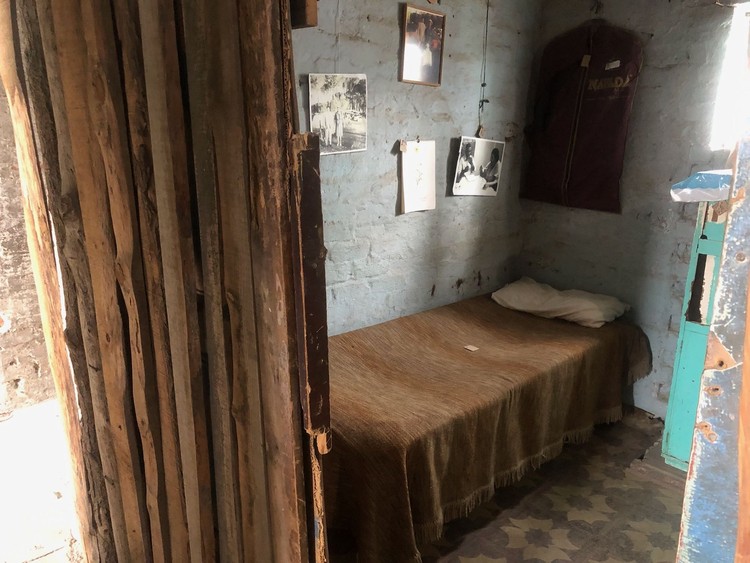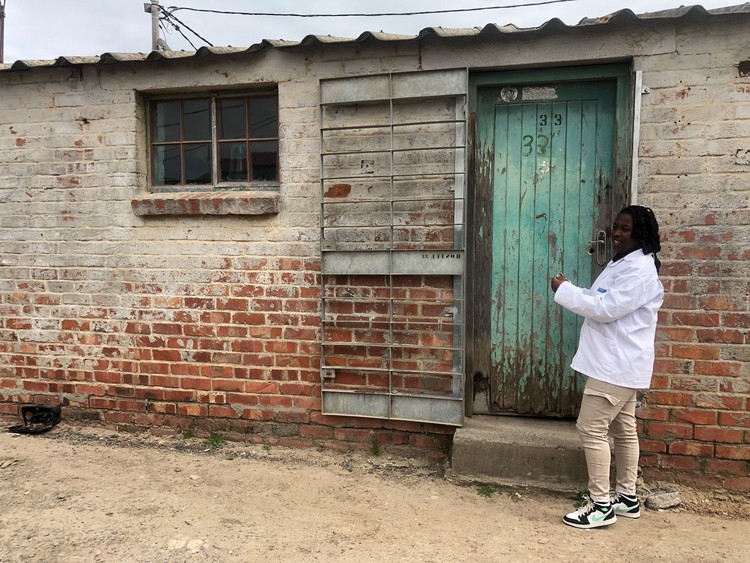Cape Town museum offers a window into life as a migrant worker under apartheid
The Lwandle Migrant Labour Museum has the last preserved migrant labour hostel
A bedroom in Hostel 33, the last apartheid migrant labour hostel in Cape Town. Photos: Mary-Anne Gontsana
- The Lwandle Migrant Labour Museum commemorates thousands of migrant workers who lived in hostels.
- Next to the museum is Hostel 33, built in the 1960s to accommodate single working men and control their movements.
- The buildings tell the stories of the men who came from the Eastern Cape to work mostly in construction and in the city’s factories.
Buildings with many small rooms, each with narrow single beds or bunks, crowded with male migrant labourers – these were the workers’ hostels in Lwandle township, Cape Town. The last preserved one – Hostel 33 in Khayalethu Street – is attached to the Lwandle Migrant Labour Museum. The buildings present a vivid view of life inside an apartheid hostel.
Made of reddish concrete bricks, Hostel 33 has a partially broken wooden door with fading turquoise paint. There is a large cardboard sign on the wall: “We the residents of Room 33 deside to write this notice desagree with you about this room to be a messeum firstly give us accommodation before you can get this room. Thank you from Room 33” (sic).
Yandisa Magagana, tour guide and collections officer at the museum, says when the museum opened in Vulindlela Street, there were still tenants living in the hostel and “they protested because they did not want to be moved”.
“Through the help of our former ward councillor, the remaining people in the hostel were successfully moved to alternative accommodation,” says Magagana.
“Founded by volunteers, Hostel 33 is the only remaining hostel that curates the hostel lifestyle in Lwandle. It is a provincial heritage site governed by Heritage Western Cape,” she explains.
The hostel and museum tell the story of migrant labourers from the 1960s to the early 2000s.
The first room we visited had two single beds propped up on bricks so that people could store belongings under their beds. A rusty cage next to one bed was used as a wardrobe to hang jackets. Also in the hostel is the “beerhall”, a room with a small table, beer crates and beer bottles, a place to have a drink when beers cost R2 a bottle.
Cingimiso Nelani from the museum stands outside Hostel 33, the only preserved apartheid hostel in Cape Town. It is a provincial heritage site governed by Heritage Western Cape.
Magagana says hostels were built here in the 1960s to accommodate 500 single working men, and designed to control their movements. The men came from the Eastern Cape’s former homelands, Transkei and Ciskei, to work mostly in construction and in factories or on farms.
During the unrest in the 1980s, the population rapidly grew to nearly 3,000 people, not only men. Residents started to add shacks for more living space.
On 24 September 2018, Western Cape Minister of Cultural Affairs and Sport Anroux Marais, and Heritage Western Cape declared Hostel 33 at the Lwandle Migrant Labour Museum a provincial heritage site.
The Lwandle Migrant Labour Museum has displays telling the story of Cape Town’s migrant labourers.
Next to the hostel in an old community hall is the Lwandle Migrant Labour Museum, opened on Workers’ Day, 1 May 2000.
“What makes Lwandle unique is that it is a township that was built in the centre of the Helderberg Basin. It is unusual to find a township in the centre of the city; usually they are at the outskirts … It was viewed as the ‘black spot’ of the Helderberg,” says Magagana.
Exhibits include wheelbarrows, dompasses, old suitcases, radios and TVs. Displays tell the history with photographs.
The museum operates Monday to Saturday. Tour fees range from R50 to R350. The museum also offers educational programmes for schools.
Support independent journalism
Donate using Payfast

© 2024 GroundUp. This article is licensed under a Creative Commons Attribution-NoDerivatives 4.0 International License.
You may republish this article, so long as you credit the authors and GroundUp, and do not change the text. Please include a link back to the original article.
We put an invisible pixel in the article so that we can count traffic to republishers. All analytics tools are solely on our servers. We do not give our logs to any third party. Logs are deleted after two weeks. We do not use any IP address identifying information except to count regional traffic. We are solely interested in counting hits, not tracking users. If you republish, please do not delete the invisible pixel.



